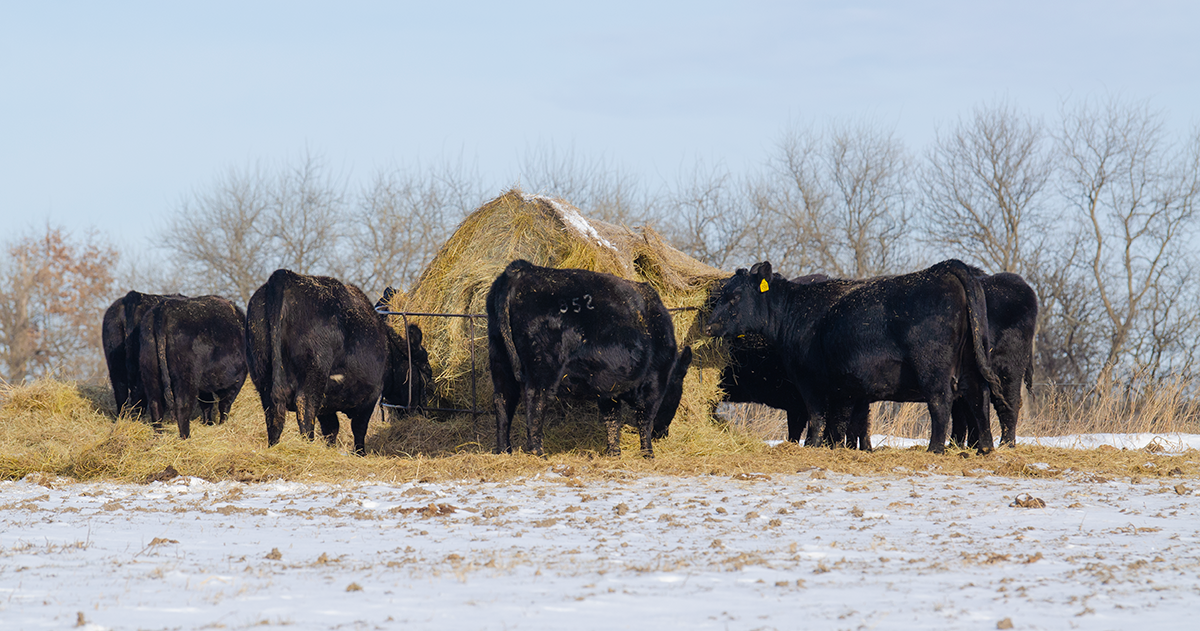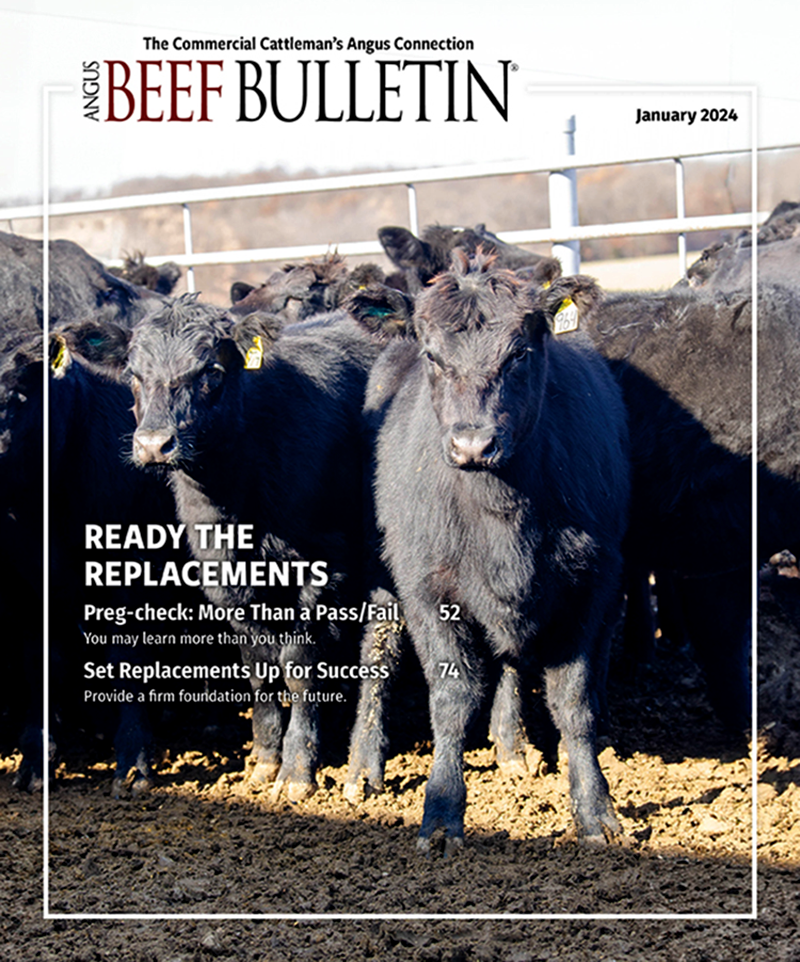
Are Your Cows Running Out of Vitamin A?
Months from green grass, stores in the liver may be running low.
Vitamin A is crucial to the immune system and healthy epithelial tissues (skin, digestive tract lining — all internal and external surfaces of the body). Beta-carotene, the precursor to vitamin A, is plentiful in green forages, so cattle are never short if they graze green pasture during summer. After a drought, however, cows might be short on this important nutrient.
Cattle with access to green pasture readily obtain about four months’ worth of vitamin A, which they store in the liver, says Cheryl Waldner, professor at the Western College of Veterinary Medicine and chair of the Beef Cattle Research Council.
“Green grass typically contains hundreds of times more carotene than harvested feeds,” she says. Haylage usually has more than hay or grain, but green forage is the best source.
If pastures were dry last year, cattle may have had lower-than-usual stores going into the winter, Waldner observes. Producers should consider providing supplemental vitamin A.
“Read labels and talk to your veterinarian and nutritionist, to be sure to give proper amounts,” she advises, cautioning producers not to double up vitamin A sources or injections. “If you are supplementing a mixed ration, take care with measurements and thorough mixing. Too much vitamin A is toxic because it is fat-soluble and stored in the liver, and the animal can’t excrete the excess.”
“We must be careful about dosage, but many cows will need supplementation if they didn’t see much green grass last summer and fall. If cows are short, their calves are also going to be short. The cows may be slow to rebreed, and there is also more risk of sickness and mortality in their calves,” says Waldner.
Field research has shown higher death losses in calves that are deficient in the first week after birth.
Many commercial supplements contain vitamin A, but when this vitamin is mixed with trace minerals, it’s not very stable, Waldner warns. “It’s an easy way to get it into the cows, eating it with the mineral/salt mix, but needs to be relatively fresh. You don’t want it sitting for more than three or four months before they consume it.”
A mineral mix left over from previous years may not have much active vitamin A. The trace minerals will be fine, but the vitamin A might not be as effective.
“If mixed with trace minerals, it is probably more likely to oxidize and degrade,” she says.
“The most important time to get vitamin A into cows is during the last two or three months before calving,” Waldner says, “but [it is] just as important between calving and the start of breeding if the cows don’t have access to green grass.”
Vitamin A is important to calf health. If cows weren’t supplemented through winter, giving vitamin injections at the same time as precalving vaccinations could ensure colostrum will have enough vitamin A, Waldner says. “It can be a bit more difficult to inject these vitamins during cold weather, however, because it’s thick and even thicker when cold. When possible, it’s best to provide vitamin A supplement with their ration, but the use of injections in calves at birth is a common and effective method to ensure a good start.”
Editor’s note: Heather Smith Thomas is a freelance writer and cattlewoman from Salmon, Idaho. [Lead photo by Shauna Hermel.]



